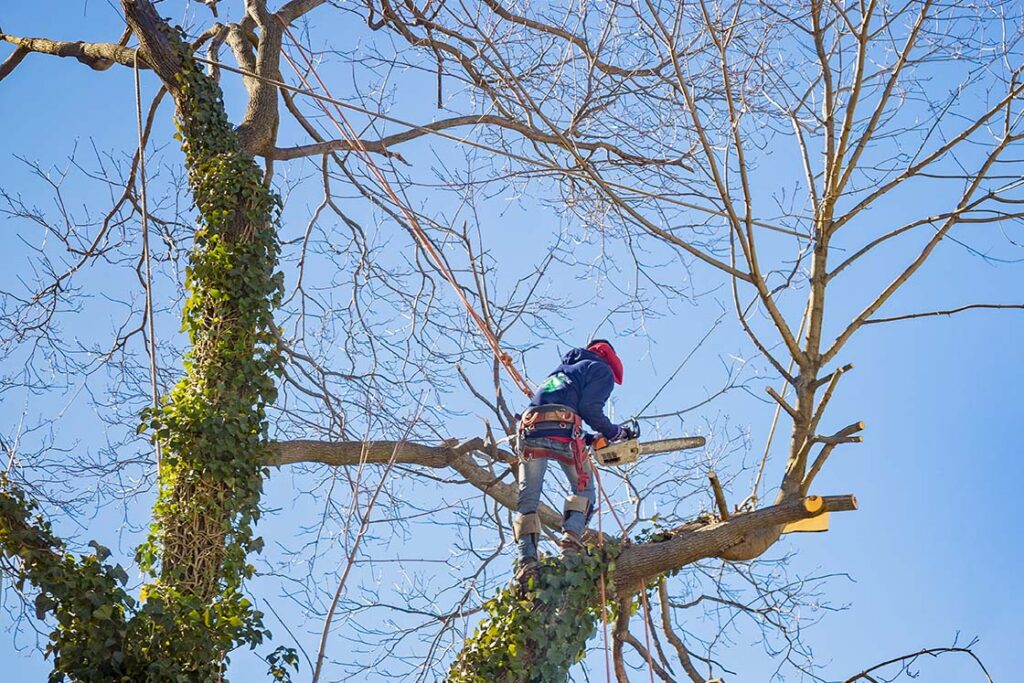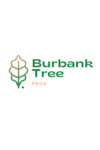
Welcome to this comprehensive guide on tree diseases presented by the arborists at Burbank Tree Pros. As experienced arborists, we recognize the crucial function trees fulfill in enhancing our landscapes and supporting ecological equilibrium. Regrettably, trees are not impervious to diseases, which can be triggered by an array of pathogens including bacteria, fungi, viruses, and other microorganisms. These diseases can detrimentally affect a tree’s health, leading to symptoms like wilting, discoloration, and in severe circumstances, death.
This guide aims to provide you with a detailed understanding of tree diseases and equip you with the knowledge and tools for effective identification and prevention. By adhering to these guidelines, you can ensure your trees’ longevity and vitality, thereby contributing positively to the health of our environment and communities.
Understanding Tree Diseases
To initiate our exploration of tree diseases, let’s first delve into understanding how pathogens affect trees and the symptoms we need to be on the lookout for:
Symptoms of Tree Diseases
- Leaf Discoloration: Abnormal coloration of leaves, such as yellowing, browning, or spotting, often serves as an early indication of tree disease, as different diseases yield distinct discoloration patterns.
- Premature Leaf Drop: Should a tree shed its leaves earlier than anticipated, this can be a sign of disease. Monitor for any changes in leaf drop patterns closely.
- Cankers and Lesions: The presence of sunken or raised areas on the bark or wood may signify pathogen activity. Scrutinize the tree’s surface for any signs of cankers or lesions.
- Mold or Fungal Growth: Mold or fungi on a tree’s surface can suggest potential disease. Be vigilant for any unusual growths.
- Wilting and Decline: Rapid deterioration in a tree’s health, including wilting of leaves or stunted growth, can be a warning signal of potential disease.
Common Tree Diseases
With the symptoms understood, let’s identify some of the most common tree diseases:
- Dutch Elm Disease (DED): A fungal pathogen transmitted by elm bark beetles is responsible for this disease, causing wilting, yellowing, and curling of leaves, potentially leading to the tree’s death. Elm trees are particularly susceptible.
- Oak Wilt: This fatal fungal disease targets oak trees and can be transmitted through root grafts or sap-feeding beetles. The disease causes rapid wilting and leaf discoloration.
- Citrus Canker: A bacterial disease affecting citrus trees, resulting in raised lesions on leaves, fruits, and stems, leading to defoliation and compromised fruit quality.
- Apple Scab: This fungal disease common in apple trees causes dark, scabby lesions on leaves and fruit, detrimentally impacting the tree’s vitality.
- Powdery Mildew: A fungal disease that affects a variety of tree species, characterized by a powdery white coating on leaves, stunting growth and inhibiting photosynthesis.
Identifying and Preventing Tree Diseases
Proactive Measures for Prevention
At Burbank Tree Pros, we advocate for proactive measures to minimize the risk of tree diseases. Here are some strategies to safeguard your trees:
- Pruning and Sanitation: Prune dead or diseased branches regularly and dispose of them appropriately. Sanitize your pruning tools between each cut to avert disease transmission.
- Planting Resistant Varieties: Opt for disease-resistant species or cultivars when introducing new trees to your landscape.
- Monitoring and Early Detection: Conduct regular inspections of your trees for disease signs. Early detection can be instrumental in managing the issue before it exacerbates.
- Proper Watering and Nutrition: Guarantee your trees receive sufficient water and nutrients to maintain their health and resilience against diseases.
Engaging Professional Tree Care
While preventative measures are key, professional tree care offers a crucial line of defense in safeguarding your trees’ health. Collaborating with certified arborists, like Burbank Tree Pros, allows you access to expert knowledge and specialized care, which includes:
- Health Assessments: Regular evaluations to identify potential issues before they escalate.
- Diagnosis and Treatment: Expert diagnosis and personalized treatment plans for specific tree diseases.
- Proper Pruning and Care: Skilled pruning and care procedures to foster tree health.
- Education and Guidance: Valuable guidance on tree care best practices and disease prevention.
We cover the entire LA area including Burbank, Irvine, Sherman Oaks, Los Angeles, Woodland Hills, Pasadena, San Fernando Valley and others. Our tree experts are always ready to help.
Conclusion
As advocates of tree care, we underscore the importance of promptly understanding and addressing tree diseases. By acquainting yourself with the symptoms and implementing proactive measures, you can effectively safeguard your local trees. Remember, healthy trees not only enhance our landscapes but also contribute to the well-being of our communities. Let’s collaborate to protect and nurture these precious resources for future generations to enjoy.

